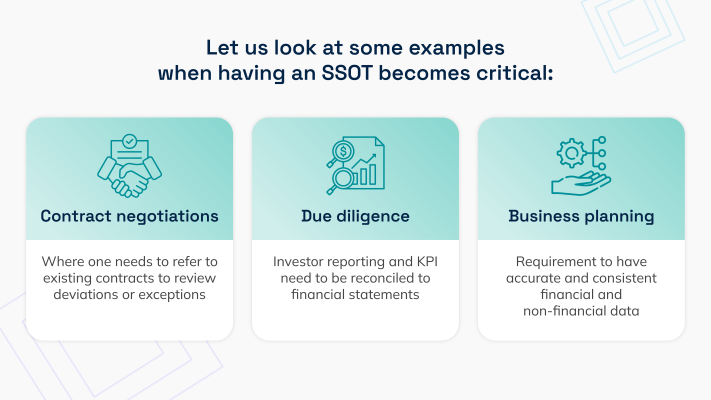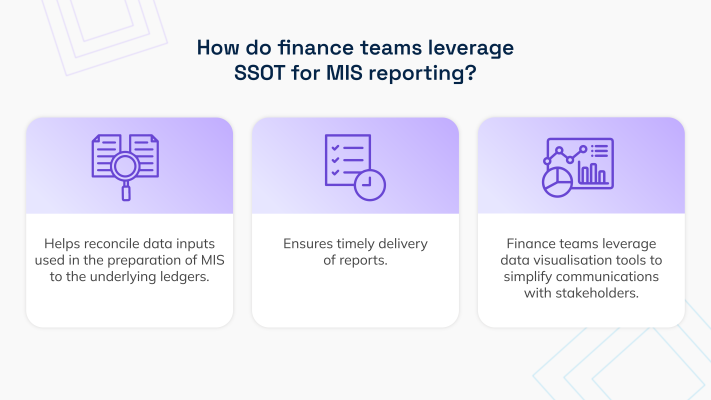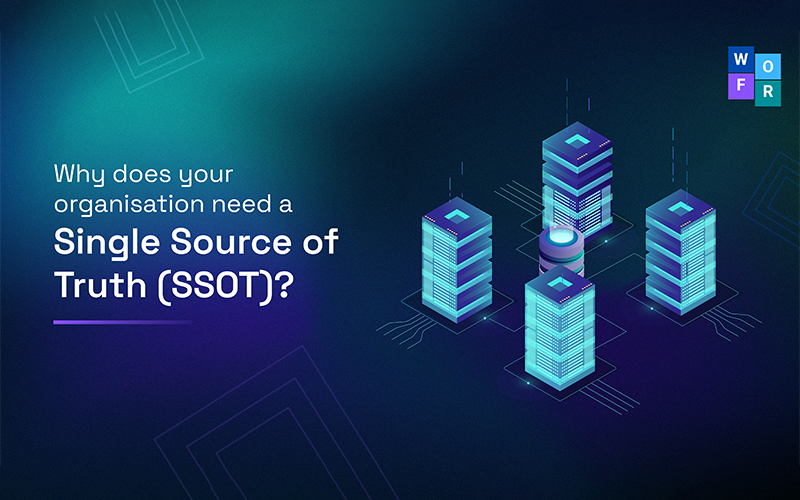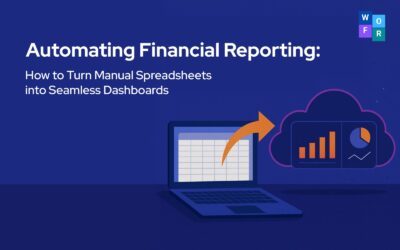Large organisations find it difficult to maintain data that is consistent and structured. Data can take multiple forms like financial information about sales, purchases, expenses, working files, financial statements or documents like contracts.
Often it is observed that numbers reported by one team differ from those reported by another team and several hours are spent reconciling these data points. This occurs because the organisation has not organised its data centrally and instead resides with the respective individuals dealing with that data.
Multiple owners of data also create data silos, leading to difficulties in collating company-wide information which is accurate and consistent thereby resulting in inefficiencies in data management.
This can be solved by creating a centralised data warehouse or a Single Source of Truth system. Setting up a culture of having an SSOT system in the initial stages of an organisation can go a long way in making data management easier in the future.
What does a Single Source of Truth mean?
We understand the SSOT system as a data warehouse that contains all the key and relevant information about your organisation- financial and non-financial. It enables all stakeholders to access the same, consistent, and accurate information thereby eliminating inefficiencies arising from having multiple data sources.
Establishing and creating an SSOT system from scratch is a one-time process that requires significant investment of time, however, if implemented well, the return on time invested (ROTI) is exponential.
Importantly, this is not a one-time activity. You would need to review your SSOT and if required update or refresh data sources to ensure data sanctity and accuracy.

Some examples of when having an SSOT becomes critical
A recent study by Accenture shows that 35% of CFOs agree that organisations lack access to quality data. Decision makers like CFOs, need to be armed with accurate data for sound decision making. Having a single data source enables them to have a clear view of challenges, performance, and the impact of current actions. The future strategies are influenced by this data.
The benefits of SSOT for CFOs:
1. Consistency and Accuracy:
The biggest challenge that a single source of truth system overcomes is the chance of having conflicting or contradictory data. With a centrally maintained database, the scope for data duplicity and irrelevancy is eliminated.
2. Streamline Reporting Process:
The SSOT reduces the burden of manually tracking down data from various silos. It streamlines coordination between teams for data collection.
With all necessary data integrated at a singular destination, the financial reporting process becomes efficient.
3. Data-empowered decision making:
SSOT ensures that key decision-makers have reliable and relevant data to interpret, evaluate, and make timely decisions. This could include data related to business operations, budgeted projections versus actuals, and data from sales and marketing campaigns.
It equips finance teams to look objectively at the data from varied perspectives too.
4. Builds trust and transparency:
When the team works with the same knowledge and datasets, the confidence in the data shared with external stakeholders by the organization is affirmed. The scope of doubting the dataset or the integrity of the data is reduced.

And lastly, how do you implement SSOT?
1. Defining objectives:
Understand your need for having an SSOT, and define what your company will achieve by creating it. Is it for collaboration, transparency, or a streamlined data storage and maintenance system? With these objects in mind, you will know what specific data and functions need to have a centralised warehouse.
2. Determine data to include:
Make a checklist of the relevant data you want to include in your SSOT. Prioritise this based on its vitalness to your business.

3. Choose the right tool/platform:
You can build your centralised database over simple shared sheets or use a tool that can help you. These tools can range from:
– CRMs
– Knowledge Management Systems
– Business Intelligence tools
Some features that you may look at are smooth navigation, multiple file storage formats, intuitive search, collaborative features like the unified dashboard, and security measures like tracking access logs, 2FA, single sign-on, and others.
4. Create internal policies for maintenance:
Decide on organisational rules and frameworks that define who can access the data. They can be based on type, designation, hierarchy, or any criteria that you may find suitable.
Thoroughly verify and allow powers to authorised personnel to update, edit and delete data. This helps maintain the authenticity, integrity, and accuracy of data.
5. Implement the SSOT:
You can implement this process of setting up your centralised database in phases. Once you have crucial information set up, you can start providing access to some of the teams.



